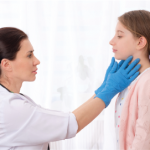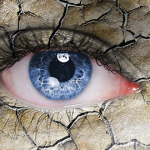
When tennis champion and megastar Venus Williams shared publicly that she was suffering from Sjögren’s syndrome, the world became interested in learning more about the autoimmune disease that causes dry eyes, skin rashes, and fatigue. The news remains popular, and in the past month, nearly 7,000 articles have mentioned the rheumatic disease and Williams’s diagnosis, according to a Google search.
Between 400,000 and 3.1 million adults are affected by Sjögren’s syndrome. The disease is often challenging to identify, and it is reported that Williams experienced joint pain and other symptoms for several years before receiving an accurate diagnosis.
Author of the ACR’s patient fact sheet on Sjögren’s syndrome, Christopher Wise, MD, agrees that recognizing the condition can be difficult and writes, “Diagnosis depends on a combination of symptoms, physical examination, blood tests, and sometimes special studies. Dry eyes and mouth may be early signs of the condition, but require further investigation, because these symptoms can be caused by many other conditions or medications.”
Multispecialty Collaboration Encouraged to Recognize Condition
Swedish physician Henrik Sjögren first described a group of women whose chronic arthritis was accompanied by dry eyes and dry mouth. Today, rheumatologists know more about the syndrome that is named for Sjögren and often collaborate with other medical specialties to treat patients with the disease.
In fact, the ACR recently endorsed the first classification criteria for Sjögren’s syndrome, which call for a multispecialty approach to diagnosing the condition.1 According to the new criteria, three medical specialties (rheumatology, ophthalmology, and oral medicine) are required to determine a patient’s disease status. Patients must meet at least two out of three criteria below to be classified as having Sjögren’s syndrome:
- Blood test indicating presence of specific antibodies related to autoimmunity (anti–SS-A/B, or rheumatoid factor and antinuclear antibody titer ≥1:320)
- Eye examination based on staining the surface of the eyes (using lissamine green and fluorescein) and scoring the level of dryness, which indicates an impaired ability to produce tears.
- Pathological examination of a biopsy of the minor salivary glands found in the lip (involving detection of lymphocytic foci) that indicates presence of autoimmune impairment of salivary function.
In the patient fact sheet, offered on the ACR’s website, Dr. Wise encourages a multispecialty approach stating, “An eye examination is helpful in detecting any eye changes seen in Sjögren’s. Blood tests can determine the presence of antibodies (immune system proteins that help destroy foreign invaders) typical of the disease. Typical antibodies include antinuclear antibodies, anti-SSA and -SSB antibodies, or rheumatoid factor. Biopsies of saliva glands around the face or under the surface of the inner lip also may be used to make a diagnosis.”
Sjögren’s syndrome cannot be cured, but in many cases proper treatment helps to alleviate symptoms.
Help put the spotlight on Sjögren’s syndrome and other rheumatology diseases, medications, and topics by sharing the ACR Patient Fact Sheets, which can be downloaded by visiting www.rheumatology.org and clicking on “Patient Resources” under “Popular Content.” See an excerpt from the Patient Fact Sheet on Sjögren’s syndrome here.



